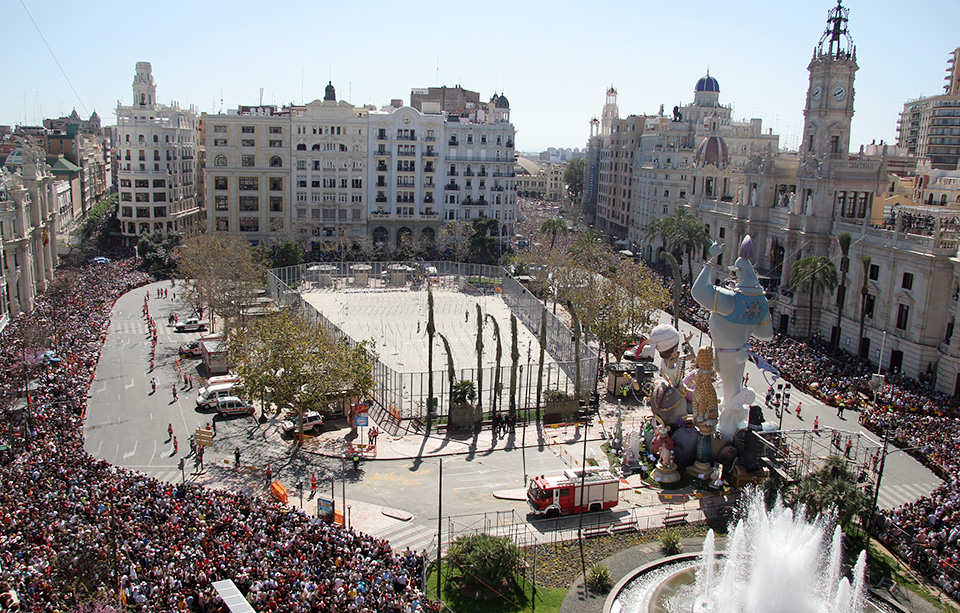The Fallas Festival have their origins in a ritual celebrating the arrival of spring, later converted by the church into a commemoration of the day of Saint Joseph. The inhabitants of Valencia used to throw their old furniture and junk in the street and burn it as a symbol of purification, showing that winter had gone and spring had arrived. Over time, they also began to burn satirical figures representing those they most detested in the city. Nowadays this spontaneous fiesta is very different indeed.
The Fallas as we know them today date back to the 18th century. There are currently some 400 Fallas commissions in Valencia city. Each of them sets up its own Falla and celebrates the fiestas in the open air. The Fallas are real works of art made from papiermâche and represent satirical scenes, normally referring to current affairs and Valencian customs.
The Falla artists responsible for creating the Fallas zealously protect the subjects and designs of their monuments, which are only unveiled on the night of March 15th, when all the Fallas are planted in the streets and squares of the city. The next day, the Organising Committee visits all the monuments and chooses the best in each category. Every year the Fallas in the Special Category – those with the biggest budgets – compete for the prestigious first prize, which recognises their originality, beauty and technical difficulty.
For five days, from March 15th to 19th, the Fallas remain on display in the streets and the Falleros party around their Fallas. There are parades with music and bands every morning. At midday, there are deafening firework barrages - mascletás – and communal lunches. At night, there are open-air dances and fireworks displays.
La Plantá
In the early hours of March 15th the Fallas are planted. All the Falla monuments are installed in the streets and squares of Valencia in a single night. The children's Fallas are installed on the previous night – the 14th. La despertà: the comisiones falleras – Falla groups – parade around the city waking everyone up by letting off fireworks – mainly bangers.
La Mascletá
The mascletá or firework barrage takes place every day from March 1st to 19th in the Town Hall square. This firework display is based solely on noise and is the favourite part of the fiesta for the many Valencians who come to listen every day.
La Nit del Foc
Every night during Fallas week there are firework displays, but the largest and most spectacular takes place on the night of March 18th – which is why it's called the "Nit del Foc" (night of fire).
La Ofrenda
The floral offerings: the Falla groups, with the Falleras and Falleros all dressed in traditional costume, parade through the city, sometimes covering several kilometres, to the Plaza de la Virgen square, where they present bunches of flowers to the Virgen de los Desamparados. They are used to make an enormous tapestry that is on public display for several days. This takes place on March 17th and 18th from 4 p.m. until late.
La Feria de Fallas
The most important bullfights held in the city.
La Crema
La crema: The crowning point of the Fallas. At midnight on March 19th, all the Fallas are burnt in front of the emotional Falleros. These spectacular blazes leave nobody indifferent.





